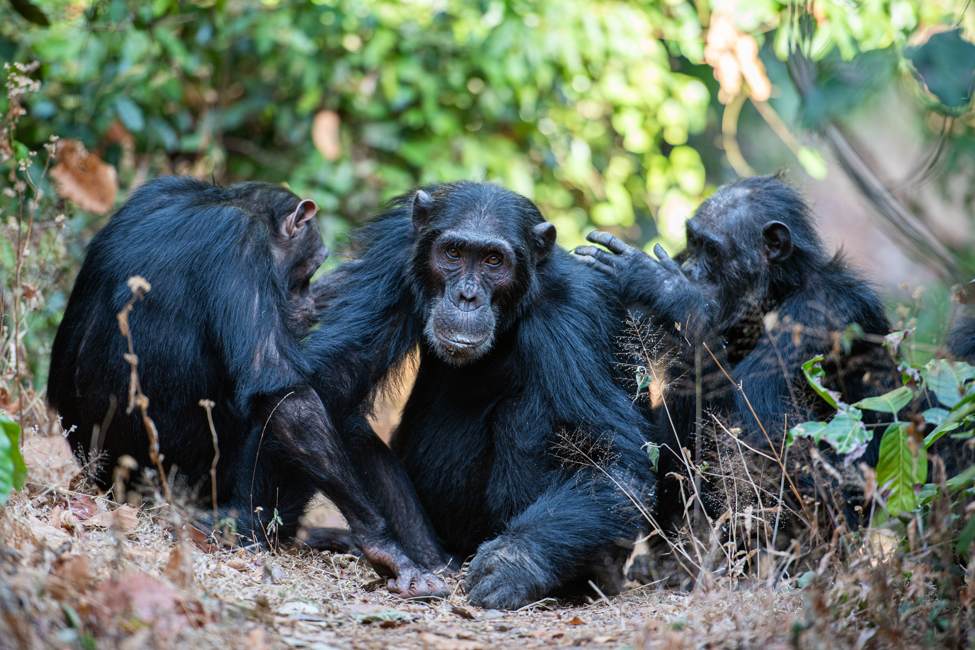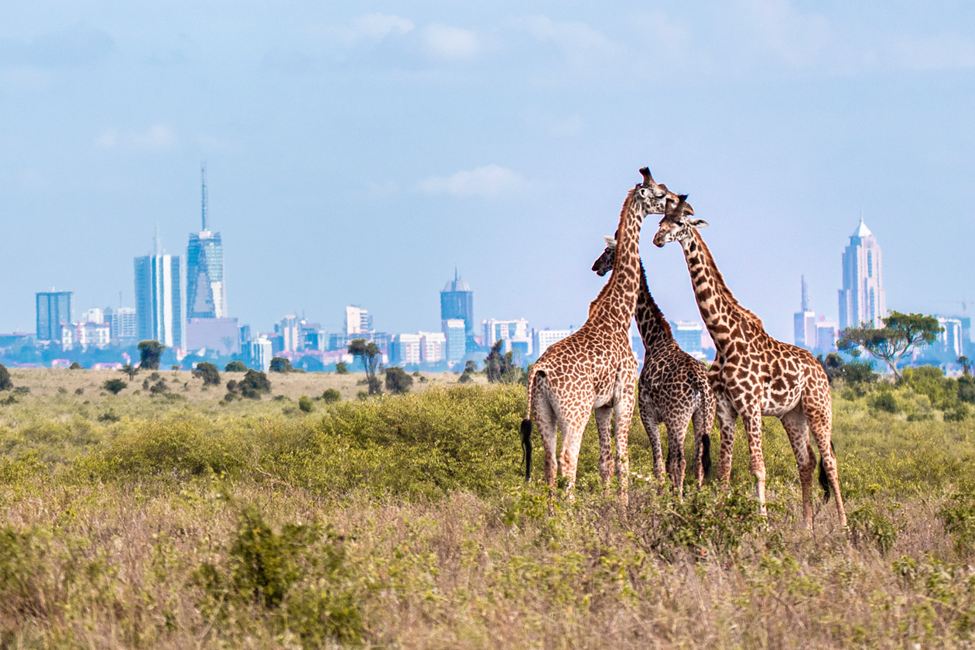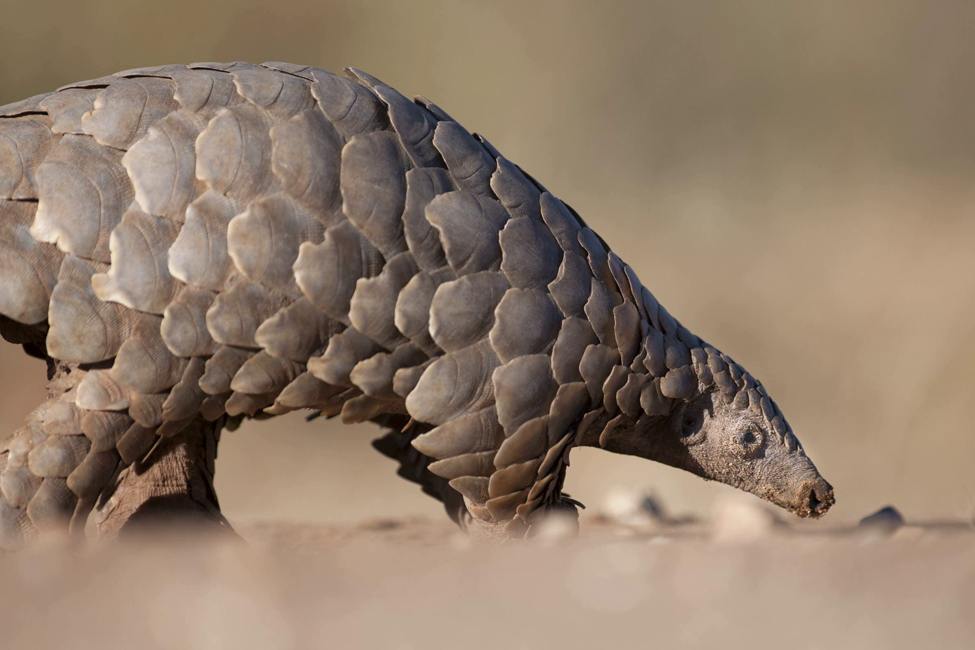A Namaqua chameleon in threat display, Namib desert, Namibia, by Yathin S. Krishnappa.
Meet the “Little Five” Safari Animals of Namibia
The primary goal of many safari goers is to see the Big Five African game: leopards, African elephants, Cape buffalos, rhinos, and lions. As rewarding as it is to watch these animals in the wild, you’ll miss out if they’re the only things you look for. Sometimes, the best things come in small packages!
Did you know that Africa also has the Little Five? These diminutive creatures—the elephant shrew, the leopard tortoise, the buffalo weaver, the ant lion, and the rhinoceros beetle—live in many parts of Africa and are fun to look for around your lodge or while on a hike.
But there’s another “Little Five”! The unique desert ecosystem of Namibia‘s Skeleton Coast has so many tiny critters that locals developed their own checklist. Read on to find out more about five marvelous animals of the dunes!
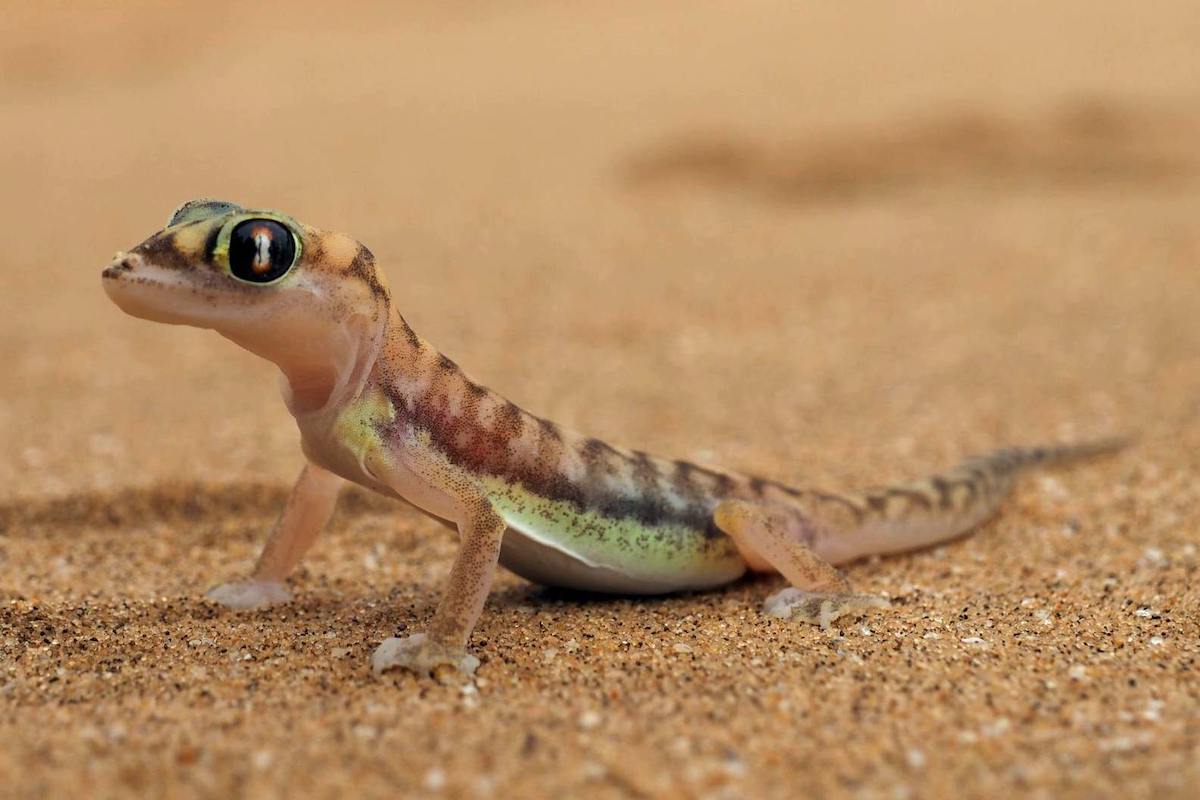
The Namib web-footed gecko’s translucent skin helps it blend in with the sand. Photo by Simon’s Images.
Namib Web-Footed Gecko (Pachydacylus rangei)
Let’s meet the first of Namibia’s Little Five: the Namib web-footed gecko, also called the Namib sand gecko or palmatogecko. This tiny lizard can reach up to five inches long from nose to tail tip.
The Namib web-footed gecko is well adapted to desert life. Webbed feet help it scurry over sand without sinking. They also serve as spades when the gecko burrows. Translucent skin helps it blend in with the sand.
Namib web-footed geckos are most active at night. During the day, they hide in the sand to stay cool. Their large eyes help them hunt for insects in the dark.
Interestingly, these geckos have no eyelids! They keep their eyes clean by licking their eyeballs.
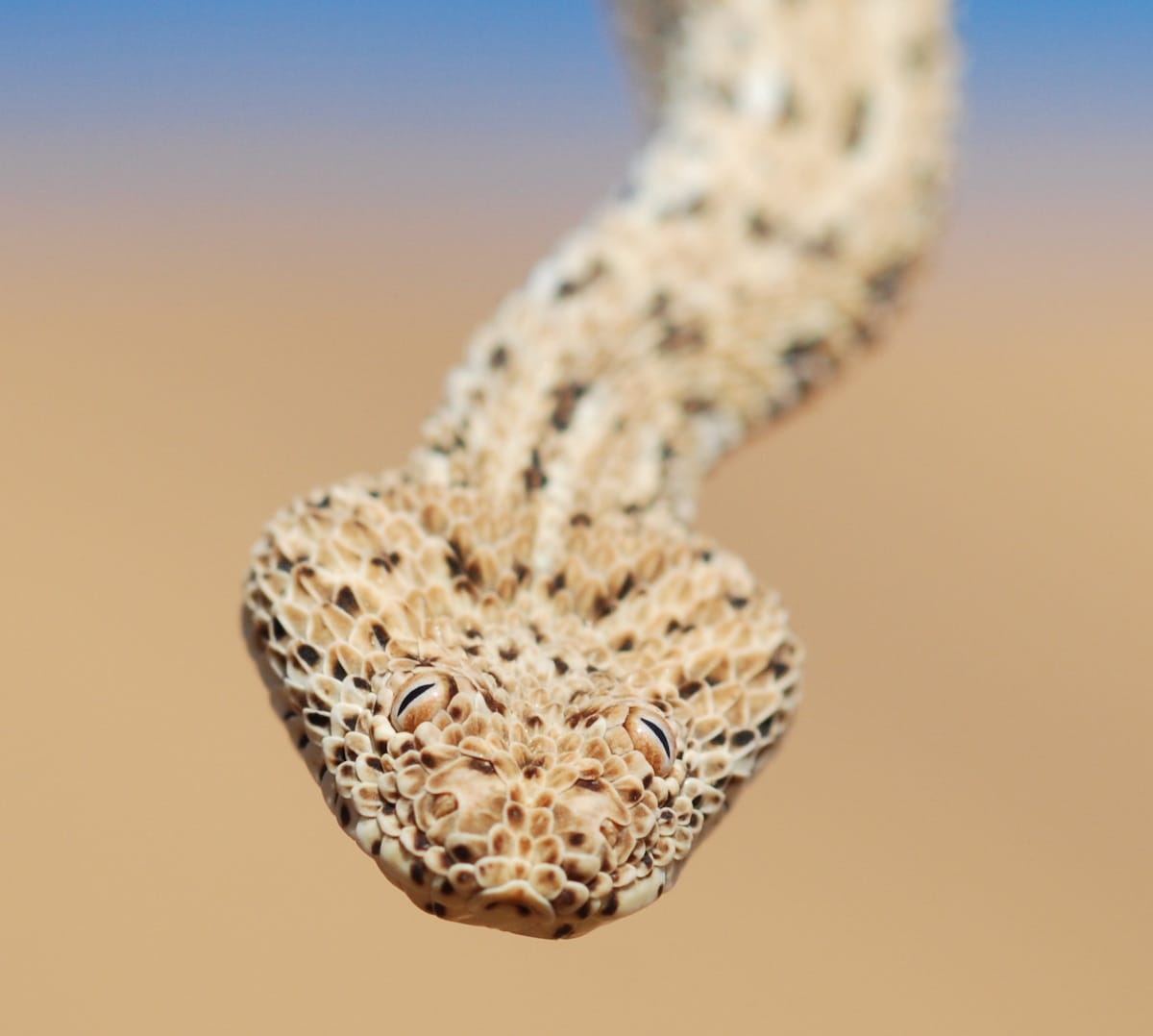
Peringuey’s adder, or the Namibian sidewinder, can see what’s going on while buried in the sand thanks to having its eyes on top of its head, rather than at the sides. Photo by Jay Iwasaki.
Peringuey’s adder (Bitis peringueyi)
Peringuey’s adder travels over the sand in sideways, curving motions — giving it the second name of “sidewinding adder.”
The Peringuey’s adder eats other small reptiles, particularly lizards. Although venomous, its bite is not fatal to humans. To hunt, it buries itself in the sand with only its eyes and the tip of its tail showing. The tail tip can attract prey, who sometimes confuse it for a wiggling insect.
Like the rest of Namibia’s Little Five, Peringuey’s adders are small. Most individuals are just eight to ten inches long!
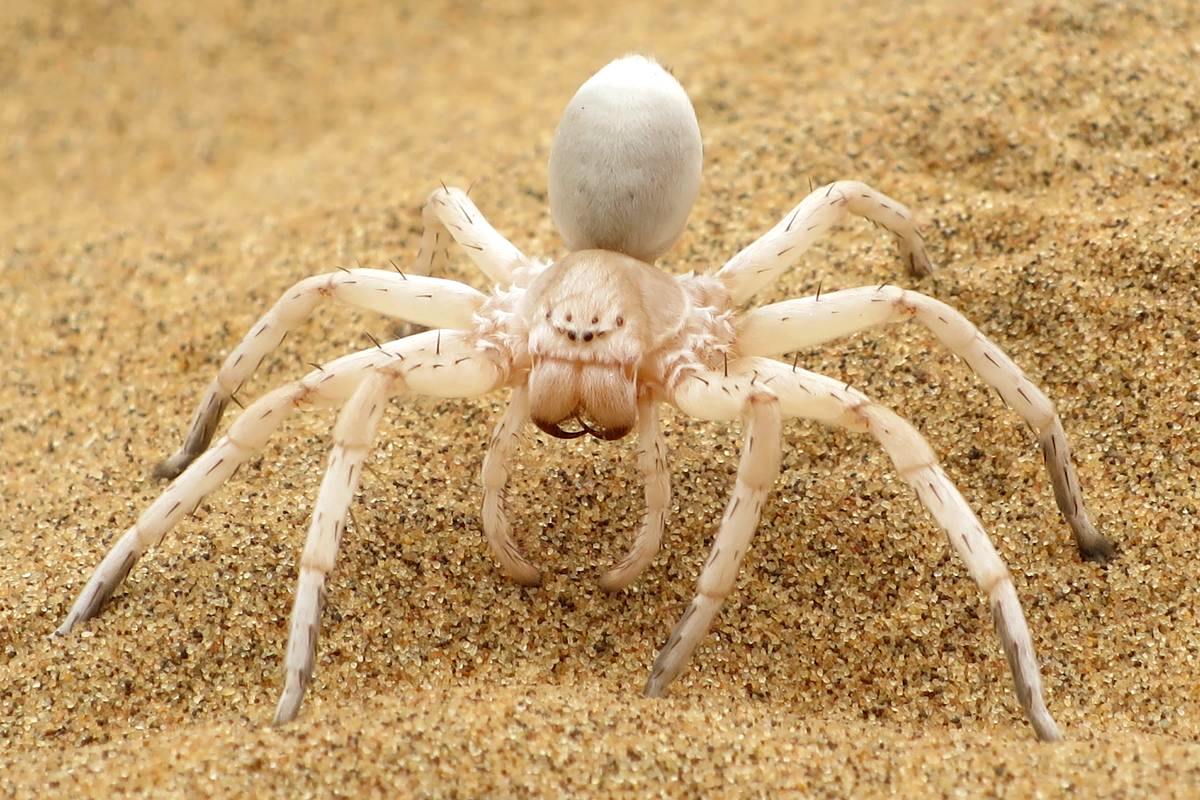
Dancing white lady spiders live in burrows beneath the sand. Photo by Lworch.
Dancing White Lady Spider
Dancing white lady spider is a name given to two species in the Namib Desert: Leucorchestris arenicola and Carparachne aureoflava.
The two species look similar, but are different sizes and perform different “dances.” Leucorchestris arenicola, a larger spider, taps its two front legs on the sand to communicate with other spiders. Carparachne aureoflava, which is only two centimeters long, cartwheels down sand dunes to escape enemies, such as parasitic wasps. Because of this, it is also known as the cartwheeling spider or wheel spider!
Both spiders live in burrows under the sand that they line with spider silk. The burrows can reach more than a foot deep.
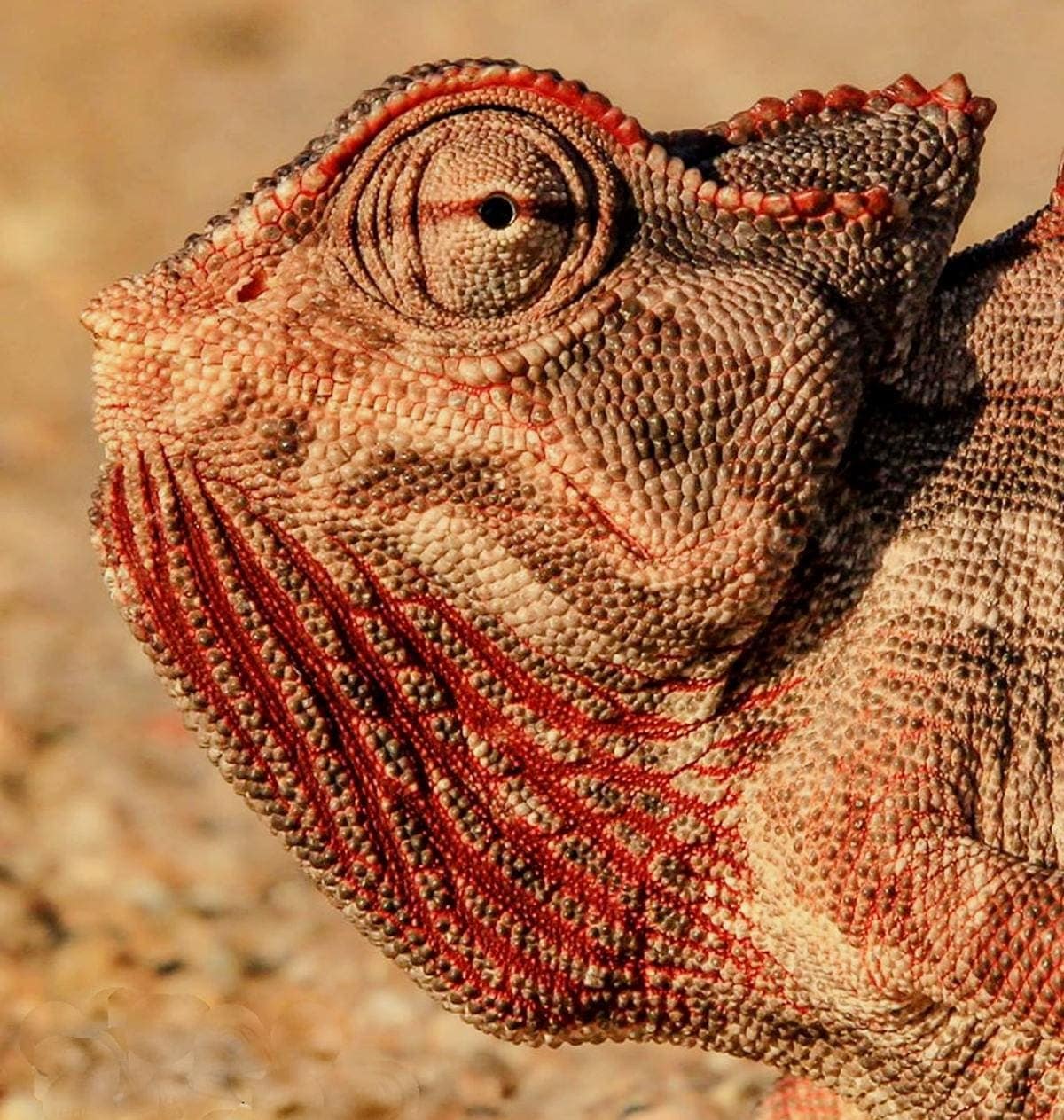
Namaqua chameleons change colors to communicate and depending on temperature. Photo by Chantelle Bosch.
Namaqua chameleon (Chamaeleo namaquensis)
The color-shifting Namaqua chameleon is one of the larger chameleons in southern Africa, reaching up to ten inches in length. It’s also especially suited to desert life. Water is scarce in the Namib desert, so this chameleon “drinks” by absorbing water droplets that condense on its skin when temperatures drop.
With a pale belly to deflect heat from the scorching sand, the Namaqua chameleon can take on shades of gray, brown, deep red, yellow, and greenish-black, depending on its mood, lighting, and the surrounding temperature.
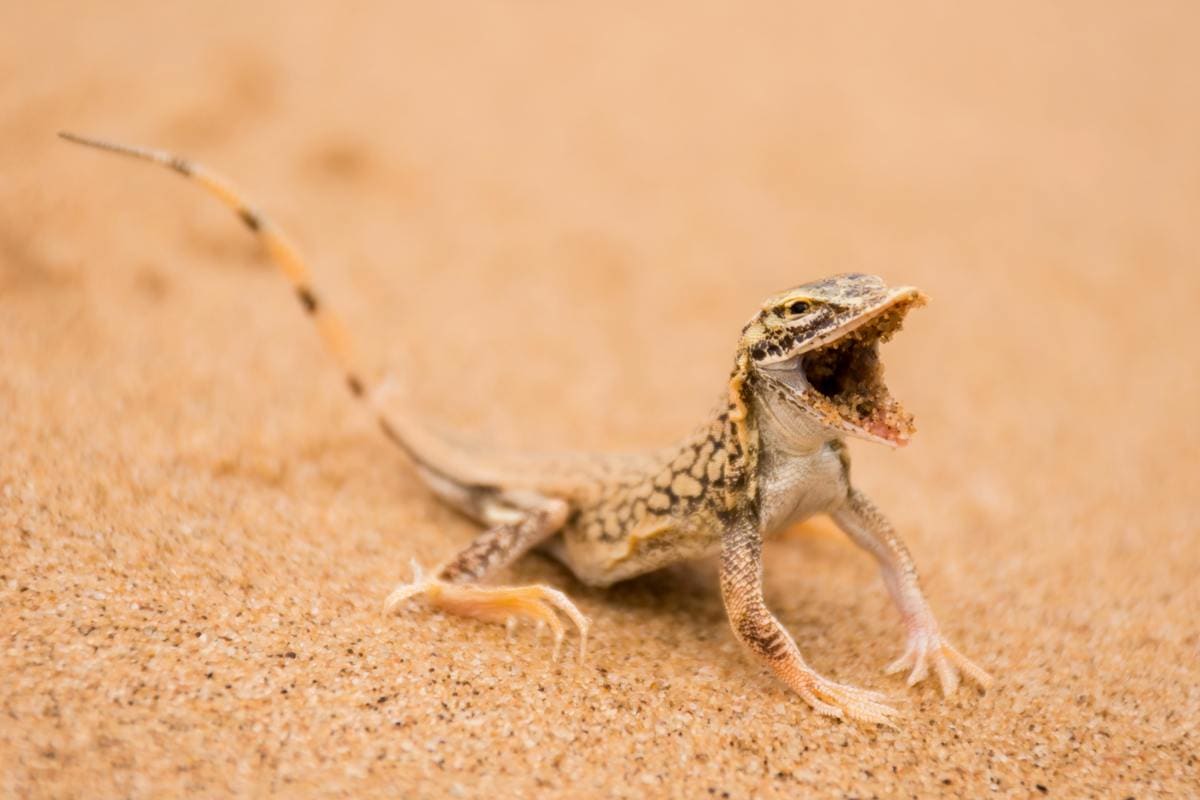
A shovel snouted lizard in Dorob National Park, Namibia, makes a threat display.
Shovel snouted lizard (Melores anchietae)
Shovel-snouted lizards are small, fast, and good at dancing! To keep cool on hot sand, they lift their feet in an alternating pattern. This gives each foot a brief break from the heat. It also makes it look like the lizard is trying to dance! So you might hear them called thermal dancing lizards.
Other names include Anchieta’s dune lizard, in honor of a Portuguese explorer, and the sand-diving lizard, because they tunnel into sand to escape danger or the heat. (The lizard’s shovel snout helps it burrow quickly.)
The shovel-snouted lizard has a special organ that stores water collected from morning mists. This and other adaptations help it tolerate temperatures as high as 111°F.
Namibia’s Little Five may be tiny, but they sure are tough!
See Namibia’s Little Five
The best way to see Namibia’s Little Five is on a guided walk in the Namib Desert. The cool mornings are best, but in winter timing may be more flexible due to milder temperatures. Bring plenty of water, a pair of binoculars, and a good camera if you enjoy taking wildlife photography. You may also wish to bring some Namibian dollars so you can tip your guide for a great job.
Ujuzi Travel can help you find your perfect desert guide for the Little Five. We can also help you plan your entire Namibian safari! Home to the world’s oldest desert, Namibia is like no other country in Africa. You have many options for exploring Namibia, from self-drive safaris to having a guide with you every step of the way.
Want to see Namibia’s incredible wildlife in person? Schedule a free consultation and start planning your dream safari!


